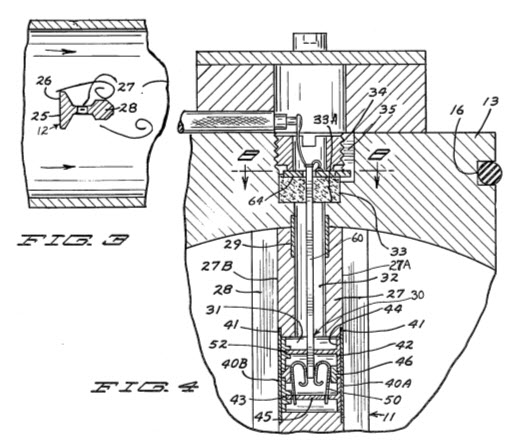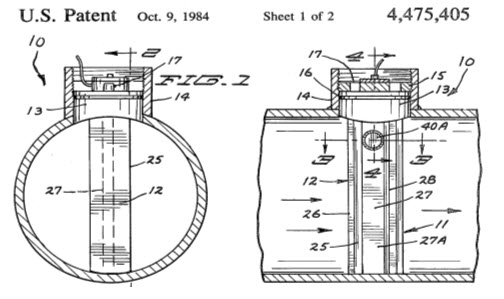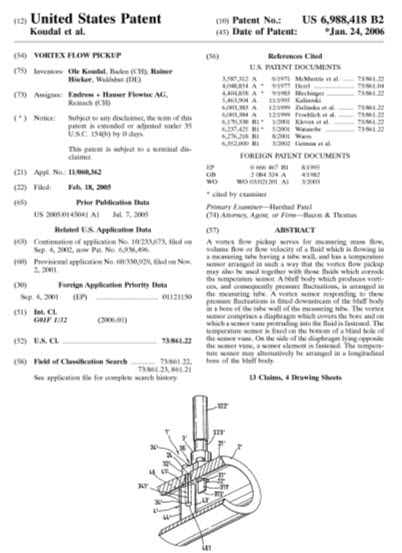General Overview of DK1125 Series explained
The DK1125 Series Vortex Shedding Flow Meter utilizes a proven design which incorporates multiple piezoelectric sensors integral to the shedder bar. This is a robust means to measure the vortices which occurr downstream from the sensor. The Digital Vortex Flow Meter DK1125 is the preferred meter for measuring Superheated Steam, Saturated Steam, Condensate, and Plant Air Flows. Other liquids and gases are possible as well. However, we focus on the Core Applications where Vortex Flow Meters have become known in the Process Industry.
Our product offering is simplified to eliminate multiple possibilities to ‘incorrectly specify’ a simple vortex flow meter application. This also eliminates multiple stocking configurations and reduces our lead times to support your needs.
We offer a quality vortex meter at a reasonable price to minimize your engineering time and expedite the purchasing process.
Rosemount Vortex Model 8800 compared to DK 1125 Digital Vortex Flowmeter
Rosemount’s Vortex 8800 Series is a well designed vortex meter which utilizes a pressure and temperature sensor to obtain the flow measurement for their multivariable version.

- We show the internal workings of the Rosemount Vortex Meter Model 8800
The drawing above depicts the current Rosemount Patent which shows the temperature sensor located downstream of the bluff body (24). This style of meter uses a pressure sensor which is located outside of the pipe (Flowbody) and is subject to the potential for process affluent contamination. This allows Rosemount to provide you with a Multivariable Vortex Flow Meter as shown below.
This view of the sensor shows the orientation of the ‘Pressure Diaphragms’ within the bluff body and the pressure sensor which is located at the top. This is a path of potential leakage and also causes the sensor to have a ‘2 Measurement’ effect. In that the sensor is ‘actually a pressure sensor with a bluff body’ incorporated in the flow tube. Other measurement idiosyncrasy’s can be process measurement delays which are due to the measurement fluid being transferred from the bluff body primary element to the pressure sensor primary element. This can cause a measurement lag time which may contribute to inaccuracies and potential leakage of the silicone fill measurement fluid. And the process media which may also be present. Photo below shows the diaphragms located in the top of the shedder bar (40A)
This is an elaborate approach to making a Vortex Measurement which is prone to errors and failures due to multiple points of influence into the process media.
The DK1125 Series Vortex Meter ‘does not’ provide a Vortex Measurement using this technique.
Foxboro Vortex Flow Meter
Foxboro’s Patent (below) utilizes a similar approach to Rosemount’s simply because Foxboro’s patent was issued before the Rosemount patent.
Foxboro’s Shedder Bar incorporates the pressure sensor type diaphragms into the shedder bar at the top. What is different, is Foxboro utilizes a Pizeoelectric Crystal in the sensor which is ‘excited’ by the vortices hitting the diaphragms in the shedder bar. These Crystals then produce the primary signal to the Amplifier.
This type of sensor is prone to stress on the diaphragm area’s from heightened movements and oscillations due to the vortex frequencies at the shedder bar.
The DK1125 Series Vortex Meter ‘does not’ provide a Vortex Measurement using this technique.
Endress + Hauser vortex flow meter
Endress + Hauser’s Vortex Meter uses a diaphragm sensor down stream from the bluff body as seen in the photo below:
This approach again is subject to the stress’s which may occur due to the ‘rapid cycling’ of the diaphragms sensing metal which is very thin and vulnerable to the influences of the process media. The housing is well sealed and will provide a good leak rate as compared to other sensors of this type. This latest patent by Endress + Hauser includes temperature correction to enable the system to indicate mass flow.
The DK1125 Series Vortex Meter ‘does not’ provide a Vortex Measurement using this technique.
The DK1125 Series incorporate the ‘traditional approach’ utilizing two Piezoelectric Crystals incorporated within the Bluff Body. This makes the DK1125 virtually immune to the influences of process fluid and any wear and tear from fluctuations of sensor diaphragms.
This approach has been around for years and is one of the most robust and proven designs for Vortex Measurement.
DK1125 Digital Vortex Flow Meter Sensor
Above Photo Courtesy of Jesse Yoder of Flow Research – see highlighted link
The DK1125 Series is a proven design which will provide years of reiliable service
In the end the most important element of a Vortex Flow Meter…. ‘It’s the Sensor’




